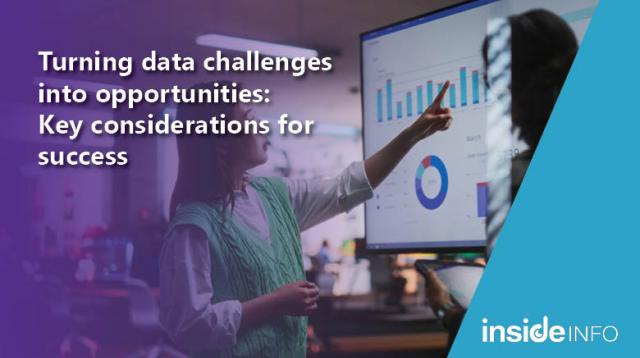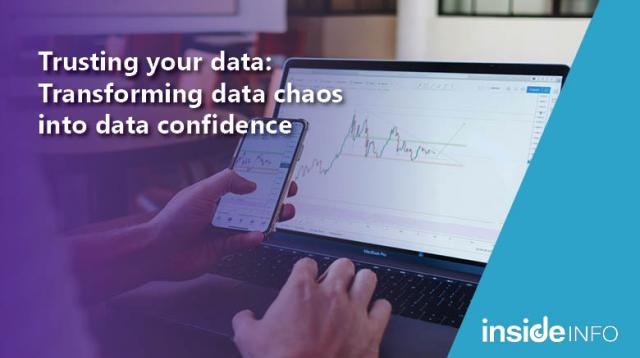
Australia’s construction business is facing major challenges at the moment. The release of the latest Performance of Construction Index (PCI) by the Australian Industry Group (Ai Group) shows that activity levels are continuing to weaken while margin pressures are intensifying. Where productivity is paramount, misjudging risks and underestimating project costs can prove disastrous for engineering and construction firms. In a business with typical margins of 5-7%, underestimating a bid by 10% without the ability to recover costs or overpricing a project, can have serious consequences. Many are combating these challenges by turning to data analytics as a vital tool to foster data-driven decisions to improve capital project outcomes and reduce risk. Here we explore some simple ways effective data management and analytics can help.
The pressure Is On
While labour productivity in the global economy has increased by an average of 2.8% a year over the past two decades, and in manufacturing by an impressive 3.6%, the construction sector has hit a mere 1% annual improvement. This trend unfortunately has filtered through to Australia, as the downturn in our construction sector is getting worse according to Ai Group’s latest Performance of Construction Index that had its lowest reading in April since June 2013.
The PCI measures changes in activity levels across Australia’s construction sector from one month to the next to gauge the health of the sector. The Index showed that new orders are declining faster, activity levels are worsening and margin pressures are intensified, especially in housing and commercial construction and apartment building work. The civil engineering sector has held its ground though, but for others, cost pressures in the delivery of construction projects remains a concern due to elevated energy costs and relatively high prices for commodities and imported construction materials, while demand is also slowing.
With new work hard to find and cost pressures mounting, firms are cutting staff at the fastest pace seen in nearly six years. This is a concern when the industry is our third-largest employer, employing nearly 9% (or 1.1 million) of all workers in Australia. In this type of environment, analytics plays a vital role in understanding where to focus your attention, how to maximise returns and minimise risk to remain competitive.
Investing In Data Analytics To Improve Productivity
Number crunching has always been a big part of the engineering and construction industry due to the fact that 35% of costs can be accounted for by material waste and remedial work.
Counting the cost of every screw or billable hour could be the difference between delivering on budget and bankrupting an organisation. Even though analytics has played a part in the sector it is lagging behind.
Even though analytics has played a part in the sector, it is lagging behind other industries such as retail and financial services in incorporating more advanced analytics techniques. Consider this: Some of the largest infrastructure projects require an average of 130 million emails, 55 million documents and 12 million workflows. With such vast amounts of data being captured from a multitude of sources, many firms can’t manage and process this much information, which is why right now the majority of all data captured goes unused in the engineering and construction (E&C) industry.
This presents a great opportunity for firms. Here we explore a few simple ways analytics can be leveraged to combat the challenges currently faced within the industry and how to get some quick wins on the board while keeping an eye on costs:
1. Consolidate & Give Data Structure & Meaning In The Cloud
As with other industries, an obstacle in the engineering and construction sector is that much of the data which has been collected until now is effectively siloed – held in isolation by the business department or division which collected it, usually in different systems, differing formats or paper-based. Useful for their own analytics but can’t contribute to the big picture, birds’-eye view needed for enterprise analytics or executives to understand what’s going on across the business as a whole. Data sources can include 2D/3D modelling data, financial data, CRM applications, project management and scheduling systems, estimating software and third party data like meteorological reports.
To provide an effective foundation for decision making, this data needs to be given structure and meaning and stored so it can be easily accessed in a central repository. Companies also need to establish standards for the data they collect in the future. Whether it’s a full-fledged data management system or simply a standard way of tagging and collecting information, standards for what you want to collect and how you collect it are critical to a long-term analytics strategy. Using cloud-based storage systems and data platforms such as Microsoft Azure and its data lake or SQL Data Warehouse can help here, in providing a single, centralised view of all data sources that can be added to almost infinitely as fast as it can be collected (whether structured or unstructured), processing information quickly at minimal cost from which to deliver insights.
2. Using Analytics To Bid On The Right Projects
Advanced analytics in the form of data modelling can replace flawed assumptions with fact-based insights about a project’s chances of success and impact on profit margins and can even help in understanding whether to bid for a project and how much to bid. By analysing historical information such as types of labour and contract arrangements, regional spending trends, and project size, analytics can assess the probabilities of project outcomes using tools like Qlik's advanced analytics capabilities. Those, in turn, will enable teams to better evaluate the attractiveness of a given project, re-balance the portfolio away from jobs that tend to underperform, and calculate the right level of contingency to include in a bid.
For example by leveraging data from past projects and combining this with data on project locations, asset classes, contract structures, and profit margins with external information such as total spending in a given sector or geography and statistics on local workforce size and unionisation, characteristics can be identified that can influence profit margins in ways that conventional analysis could not highlight. These insights can be used to identify potential risks based on past patterns to help decide whether a project is sufficiently attractive to make a bid, estimate the costs and size of the contingency to assign to the bid.
3. Using Project Analytics To Optimise Existing Projects
For those projects that have already been won and are in progress, traditional project controls often lag the incurrence of costs by days or weeks, which makes them an effective tool for retrospective reporting but not for managing ongoing projects. Typical project controls also don’t account for the interconnectivity of different metrics and the unique combinations that may have outsized effects on performance. For example, lagging crew productivity can often be recovered through special planning activities; but late material delivery or multiple days of adverse weather might exacerbate crew productivity losses and require a different intervention from management.
Unable to continually track and grapple with all the data a project generates, managers tend to follow a few key performance indicators. The resulting incomplete picture of the project’s daily progress can lead to flawed decisions on the ground.Inside Info also works with firms to use project analytics to clearly understand projects and their components such as status, teams, utilisation, billings, clients & other key metrics to keep on top of performance at a transactional and summarised level. With real-time or near-real-time project controls in place, an engineering and construction firm can track events or problems known to correlate with the erosion of bid margins, such as a one-day weather delay or three consecutive days of a subcontractor’s failure to complete designated tasks, enabling managers to react faster to potential problems. Project managers can quickly gain an overview of QA, safety, workforce and equipment data, simplifying the task of identifying risk and evaluating performance. Problems can be identified before they emerge, leading to large time and expense savings on remedial work.
4. Keep An Eye On Value With Profitability & Cost Analysis
Without profitability and cost analysis management is in the dark. Effective profitability and cost analysis is at the heart of great business decision making, whereby organisations use cost allocation to analyse performance (cost, income and profit) across different business attributes. This analysis provides insight into the true value drivers of the business and provides management with the right information at the right time to make informed business decisions such as whether to invest in a new asset or operate in a new market. As a consequence of this insight, organisations can improve forecast accuracy, with increased data available to validate the expected profitability impact resulting from a change in its operations such as loss of a key customer or change in sales channel mix.
Having a tight grip on key financial metrics like overhead rates, utilization rates, break-even points, pipeline, work in progress, backlogs, cash flow and profitability are crucial. It’s important not to overlook stakeholder engagement, cross functional collaboration and governance that will play a major role in achieving desired outcomes. Having the ability to interrogate financial performance through the lens of your customers is also critical –understanding their value to your business and how they interact to you provides an opportunity.
5. Resource Analysis & Staffing Optimisation
There can often be significant variances between how divisions and regions staff the same capital construction projects which can impact cost and schedule performance. Accurately staffing projects can be a costly challenge. Understanding the following questions through analytics are important:
- Are projects adequately staffed?
- Do specific project attributes (eg. size, complexity, duration etc) drive our staffing model?
- Can we do a better job at planning how to staff projects?
- What factors should be considered when staffing projects, and how should these be addressed?
- Is there an opportunity to save costs on the existing staffing?
- Are enough resources in the right roles to reduce risk, control costs, manage schedule and ensure quality?
Analytics can compare peak staffing to the total installed cost to assist in identifying potential outliers in the data to find causal relationships, while predictive models can be used to set project staffing benchmarks to anticipate the number of personnel by job category based on key project attributes (eg. size, region, phase etc) that would best suit a project.
6. Do We Have The Right Talent For A Data & Analytics Program?
Developing and conducting detailed analysis of project attributes and performance requires the right team. These individuals need to both understand the subject matter and have the analytical capability to prepare, extract, evaluate, summarise and interpret the data. Engineering and construction firms may need to make strategic hires or engage external subject matter experts to support development of a successful D&A program. This article explores the pros and cons of an outsourced vs inhouse analytics team approach.
7. Advanced Analytics Can Drive Opportunity
Predictive analytics, machine learning and artificial intelligence (AI) solutions will likely usher in bigger changes to the ways engineering and construction firms bid on and deliver projects. Companies like Bechtel have begun deploying deep learning and AI construction sequencing models in the business using Microsoft’s Data Bricks advanced analytics machine learning capability, to bring together multiple data sources to try to identify what makes projects profitable, safe and high quality. With a view to learning from the past and also trying to anticipate any potential unforeseen knock-on effects for large build jobs in the future.
While according to research by KPMG, information models can be built to speed up the design process to contribute to waste savings so architects, engineers and owners are on the same page while firms are starting to explore the use of drones, remote monitoring, robotics and smart sensors to track people and progress on site to increase efficiencies and safety while cutting costs.
As digitisation penetrates all parts of the economy, including engineering and construction, capitalising on the insights hidden in data will become essential. Engineering and construction companies reluctant to invest in the systems and skills needed to harness what they have collected should remember that competitors who have successfully made the move are already reaping significant benefits. They conduct savvier bids, subcontractor negotiations and increase decision speed. And they anticipate problems with ongoing projects, allowing managers to intervene before potential delays and cost overruns turn into real ones. As the industry increasingly deploys these tools, the companies that get in early will likely emerge as leaders. If you’d like to know more about how Inside Info can help, you can contact us here.





